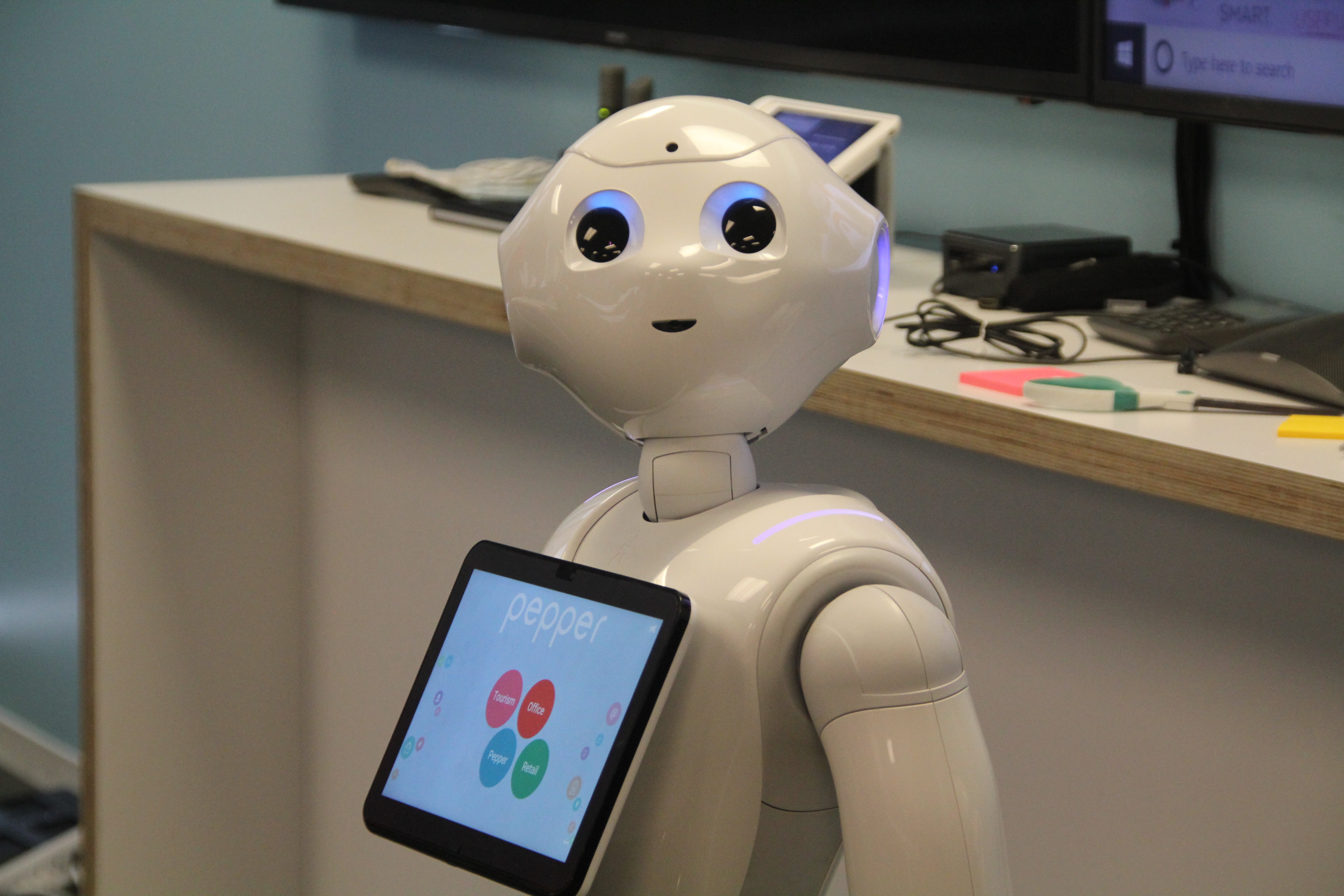The world around us is getting “smarter.” Artificial intelligence (AI), data, and natural language processing have enabled Alexa, Siri, Pandora, Netflix, Facebook, Google, Amazon, Waze, and other platforms to become part of our lives. Both AI and robotics are projected to have a massive impact on the global economy. While anticipated improvements in GDP and efficiency are positive, some fear that jobs will be lost through automation. What will AI and robotics mean for higher education? Will automation affect colleges and universities?

Chatbots have been used as teaching assistants (TAs)—so effectively that “Jill Watson” was nominated as the best TA her first semester. Admissions offices are using chatbots to handle thousands of calls per day during peak periods. Other uses of AI are being explored, such as intelligent tutoring systems. But these uses are more about question-answer agents than replacing human interaction.
New fields of study are just the beginning
AI and robotics, as areas of study, are catalyzing the creation of new majors, minors, and certificate programs in our colleges and universities. Beyond the study of AI or robotics are the complexities of how our work as professionals changes alongside increasingly capable machines. As our roles change, educational needs will change. The real challenge for higher education is to look beyond the delivery of higher education to how AI, big data, analytics, robotics, and wide-scale collaboration might impact the substance of education. What students learn, what college credentials signify, and how we keep abreast of changes may all shift.
As the machines around us become more capable—solving problems and offering advice rather than just retrieving information—our roles as knowledge workers change. New tasks will replace those that have been automated. These smart machines can do more than automate—they can amplify human performance and augment human intelligence, working alongside professionals as partners. In the pharmaceutical industry, for example, AI is helping researchers identify the most promising compounds to test. Robots are being used to grow cells, isolate DNA, and track samples, increasing the capacity to test potential drugs.
However, just because a task is automated does not mean the job goes away. Low-level tasks can be replaced by higher level ones. But this only happens if humans gain the skills needed for those higher-level tasks and adapt to a new division of labor between “man and machine.” At German auto-parts maker Bosch, for example, welders, joiners, and mechanics were trained in basic coding skills to enable them to use robots as tools.
The need for upskilling
It is estimated that one-third of the U.S. workforce will need to learn new skills by 2030, with nearly 10 percent of the workforce taking positions in fields that are unknown today. The magnitude of this reskilling challenge—ensuring that millions of new and existing professionals have the skills to transition to new positions—is massive. With rapid upskilling required often (e.g., every two to five years across a 40- to 50-year career), to what extent will future education look like today’s?
Institutions such as Georgia Tech are thinking of ways that learners can distribute learning experiences across their lives, with multiple “on- and off-ramps.” They envision creating new products and services for a flexible and continuous learning model that may include microcredentials or “minimester” classes, which Georgia Tech describes as courses that meet for three hours per week, lasting five weeks, roughly the equivalent of a one-credit course.
Future career paths are likely to be based on high-value skills (e.g., problem-solving, critical thinking, teamwork) that are transferable across multiple industries. The diploma as today’s primary credentialing mechanism may be augmented by more discrete approaches such as badges or competency certifications that provide the stackable credentials and “renewable learning” that a rapidly changing environment requires. For example, Northeastern University is using IBM badges as the foundation for professional master’s degrees in areas such as analytics. Georgia Tech’s Commission on Creating the Next in Education plans to explore a decentralized transcript based on blockchain technology.
Even more challenging than courses or credentials is to anticipate what it means to be a professional in a world of smart machines and how to prepare learners for a new division of labor between “man and machine.” We are comfortable using machines for information retrieval or data processing, but we are entering an era of “knowledge processing.” Automated hypothesis generation platforms mine scientific literature and formulate hypotheses to allow researchers to focus on the most promising leads. Similar uses of AI help clinicians gain insights from massive amounts of data, leading to more refined diagnosis and treatment of diseases.
Court decisions are predicted by tapping databases of hundreds of thousands of past cases. These intelligent machines develop new knowledge by feeding on data. Problem-solving and discovery are changing with AI, based on large datasets and algorithms. If so, should students develop “data literacy” to help them gather and analyze large datasets or identify poor data or biased algorithms that might lead to dangerous conclusions? While smart machines have tremendous potential, they lack moral capability. Along with “data literacy,” higher ed may need to emphasize ethics so that society can better balance what is possible with what is morally responsible.
Ultimately, AI and robotics may prompt us to re-conceptualize education in a world of lifelong learning and partnerships with smart machines.

Start implementing robotics in the classroom with RobotLAB!
Check our products page, and our learning platform Engage!K12. Find different tools for your classroom!
RobotLAB products Take me to Engage! K12
original article here: https://www.theedadvocate.org/computer-science-in-k-12-classrooms-needs-to-catch-up/
